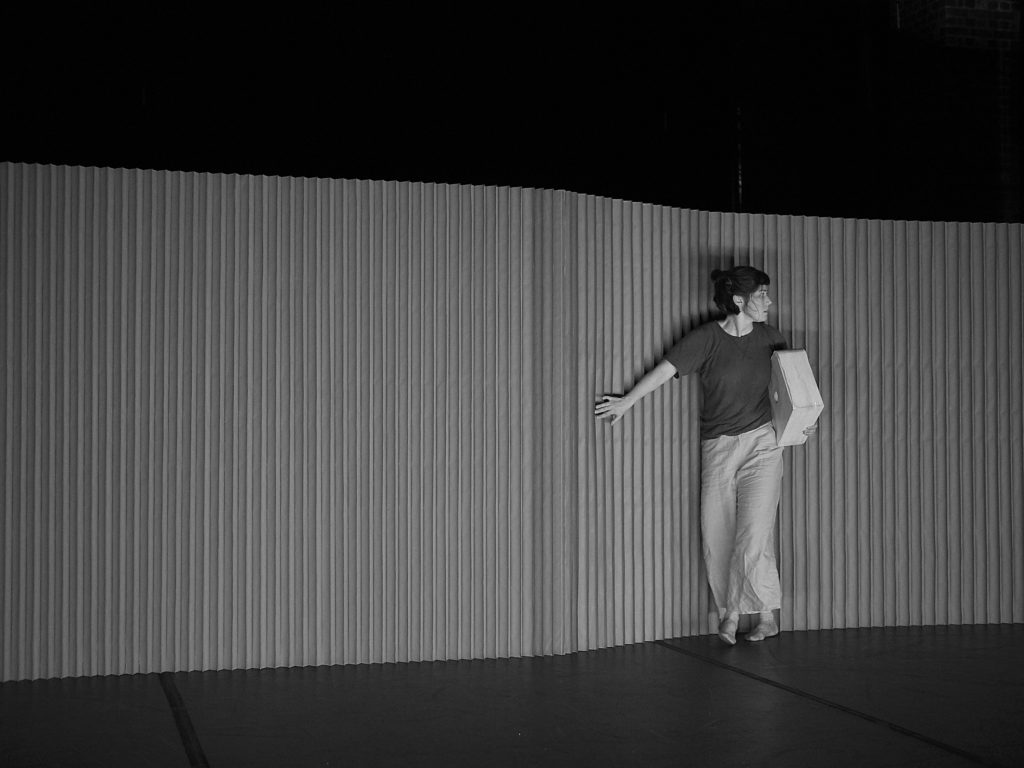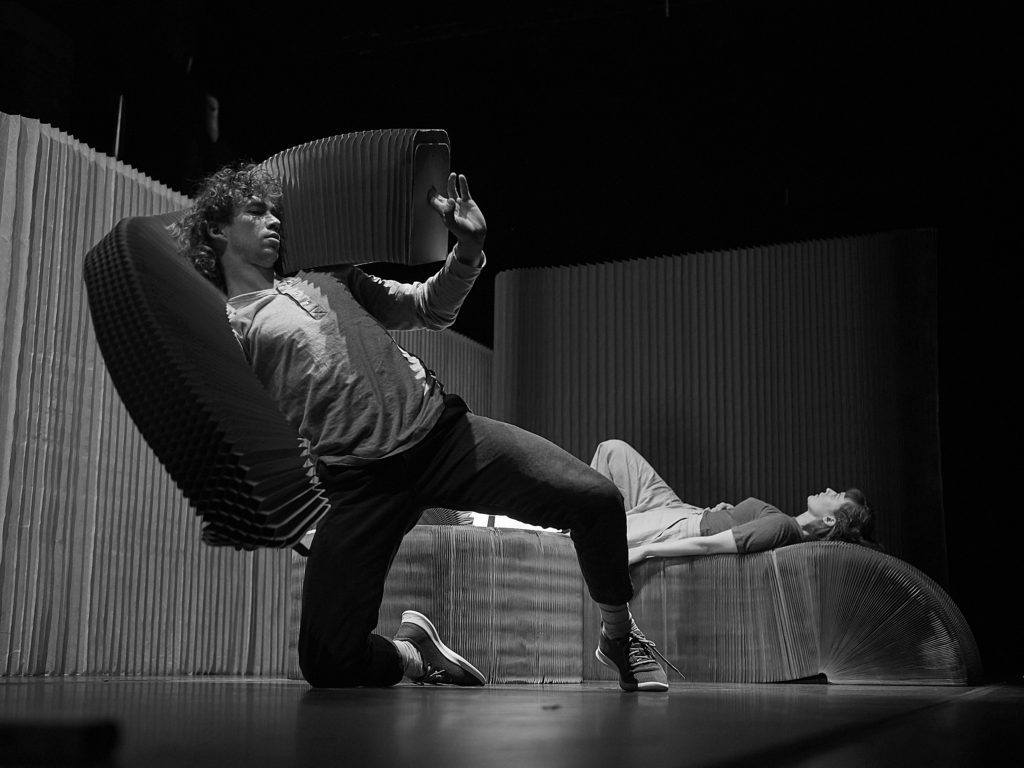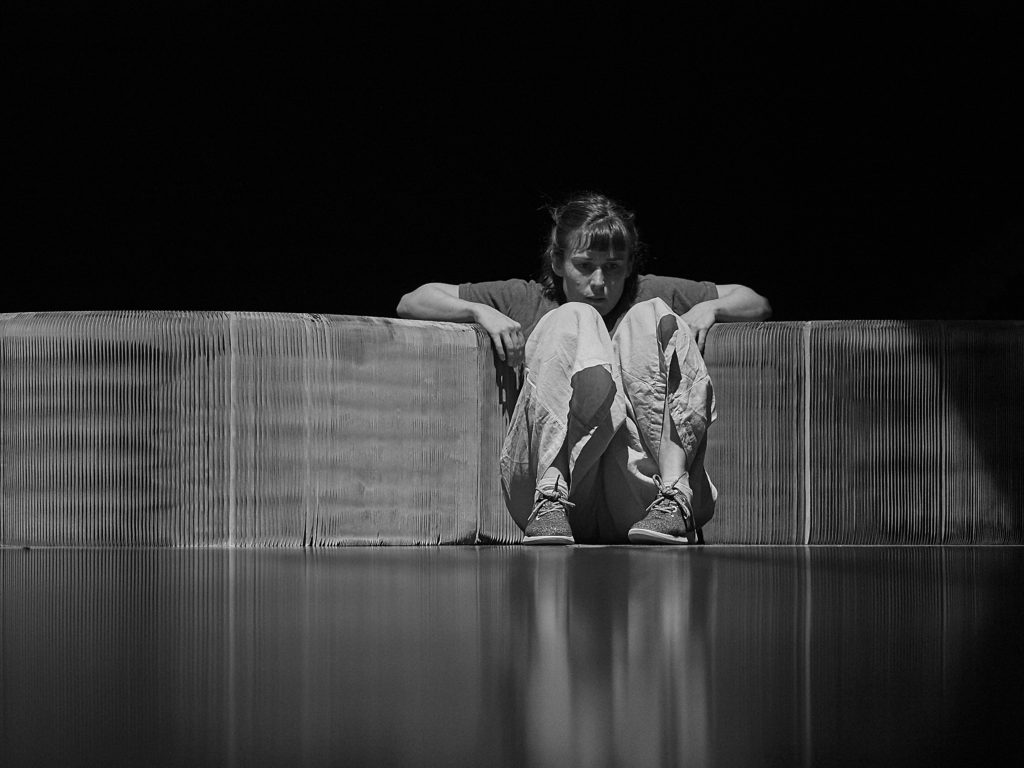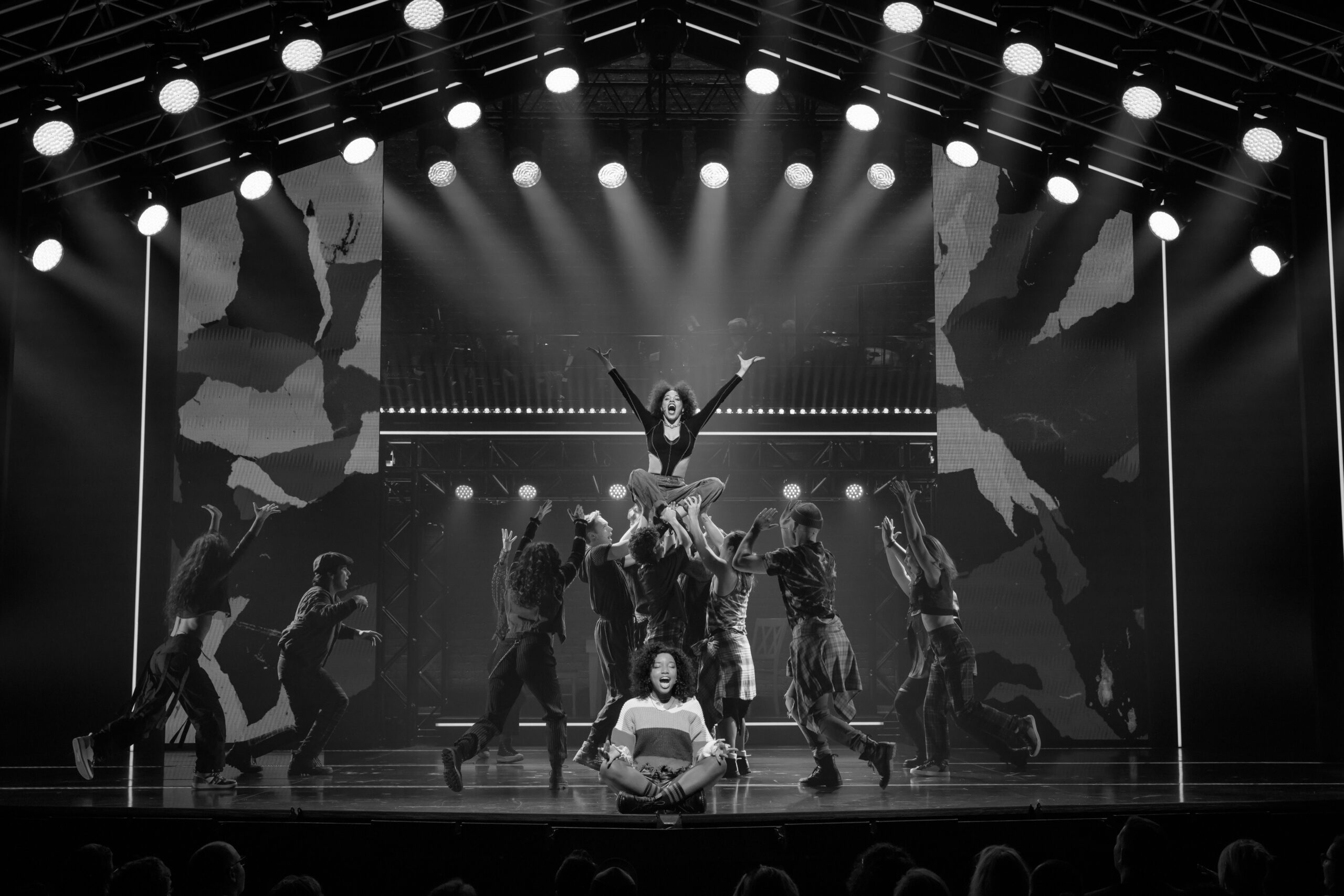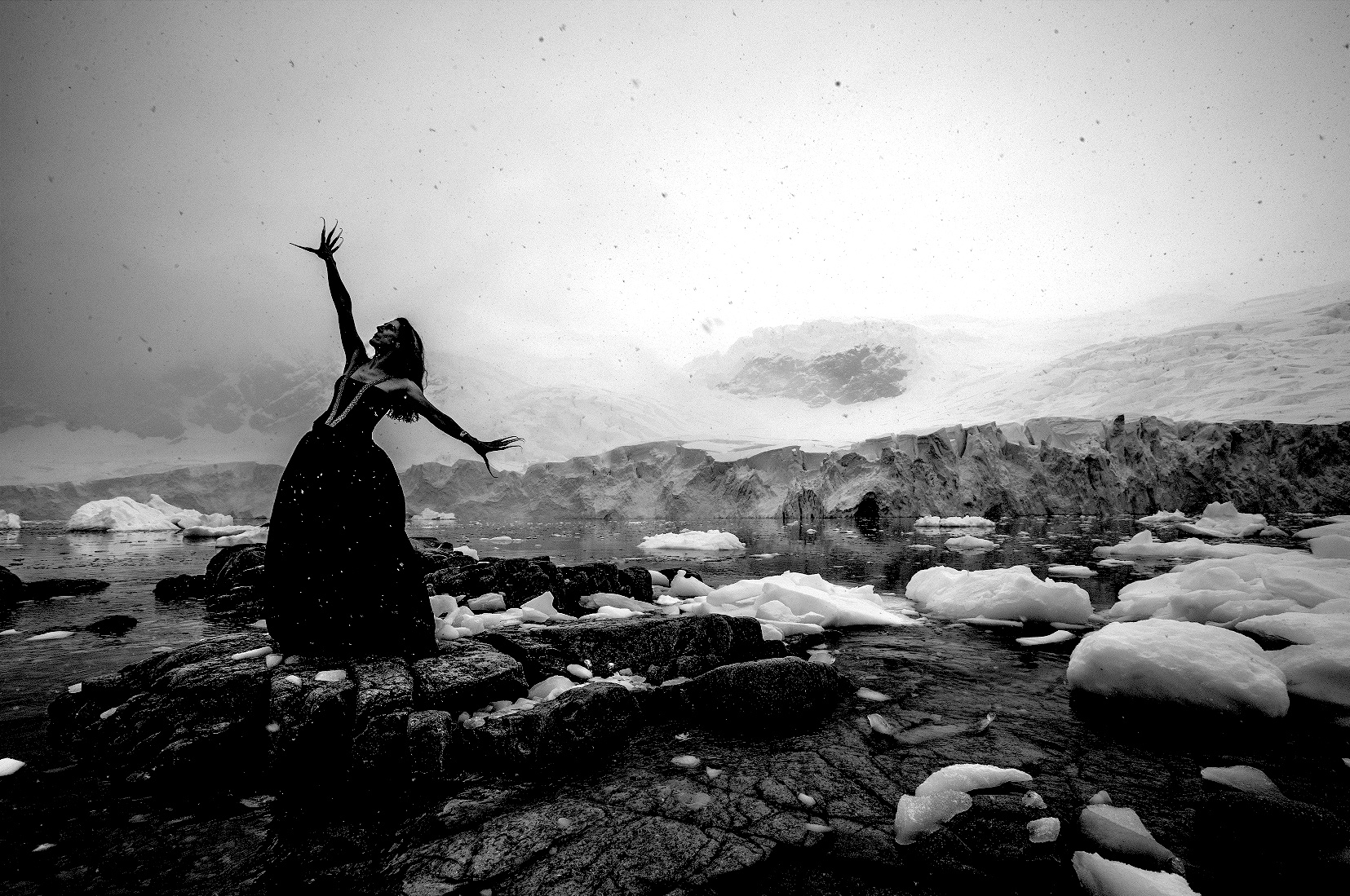CONCRETE IMPERMANENCE
Many structures we take for granted. Buildings, jobs, our history and memories and filing systems, our bodies, our minds. The earth beneath us, the sky above us. These things are essentially fragile – everything is – but our sanity relies on the untruth that they will last, and not fail us.
Concrete Impermanence is a work that rolls around in the rubble. There is a constant and relentless move towards rebuilding; the players have an innate drive towards construction. There is no emotion attached, they are simply surviving and co-operating with structures that they cannot control. The structures here are represented by hypnotically beautiful paper sculptures by Molo in Canada. The work begins with only the soft sound of paper, and we must, continually, remind ourselves that these ingenious creations could rip or burn, or disintegrate, at any moment. The untruth of stability resists: the concertina form becomes a roof, a wall, a bed, a chair, clothing, a book, a blanket, a dance partner. They are unbelievably strong and, yet, fold into nothing.
The dancers trudge on. The movements are soft and fragile, and without hard edges. Sometimes a little defeated, but with no sign of stopping. They rock with the moving earth, gazing out with stoic faces of people who must carry on. There is intimacy but it is fleeting and falling apart. There is trauma: shaking and nausea under lurid yellow. There is rest but it doesn’t last. Choreographer Alison Currie is masterful, her vision is reflective and does not force itself. Stephen Sheehan is like a historian or an astronomer; he observes and goes about his work with subtlety and grace. Watching Harrison Richie-Jones is like glimpsing the divine; something about his innocence and deep focus makes him undeniably beautiful.
The sound design by Alisdair Macindoe (who has an enthralling solo exhibition running downstairs) is particularly effective and nuanced. We are lost in the layers of chimes, thunders, trucks, trains, celebrations, the ocean, news reports, crying and fireworks. It is reflected in an animated screen (Jason Lam, Kaboom Studios) that shows an abstract visual representation of prominent moments within the sound score – for deaf and hearing audiences. It is a seismograph of sorts.
185 people died in the 2011 Christchurch earthquake that ignited this work. It feels important to rejoice and marvel at when things do work, when buildings stay standing, the lights come on and the earth is still. It’s an absolute luxury in which our resilience is seldom tested. This, too, shall pass.

